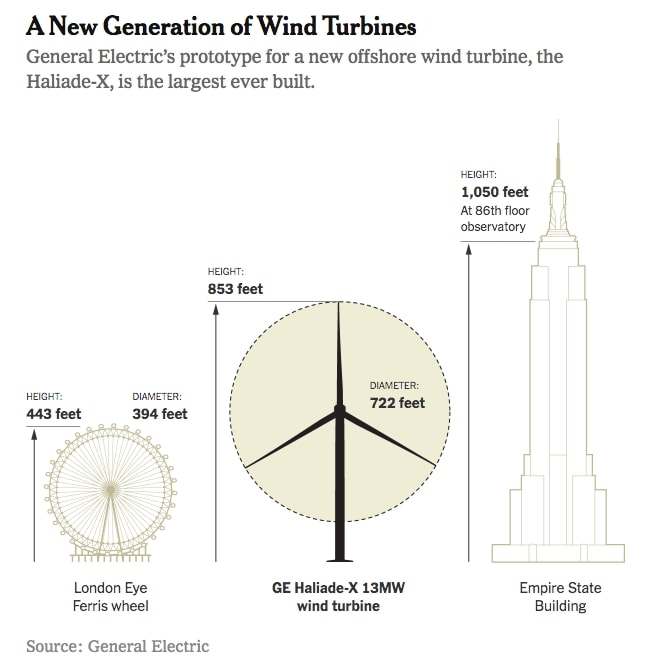
Twirling above a strip of land at the mouth of Rotterdam’s harbor is a wind turbine so large it is difficult to photograph. The turning diameter of its rotor is longer than two American football fields end to end. Later models will be taller than any building on the mainland of Western Europe.
Packed with sensors gathering data on wind speeds, electricity output and stresses on its components, the giant whirling machine in the Netherlands is a test model for a new series of giant offshore wind turbines planned by General Electric. When assembled in arrays, the wind machines have the potential to power cities, supplanting the emissions-spewing coal- or natural gas-fired plants that form the backbones of many electric systems today.
G.E. has yet to install one of these machines in ocean water. As a relative newcomer to the offshore wind business, the company faces questions about how quickly and efficiently it can scale up production to build and install hundreds of the turbines.
But already the giant turbines have turned heads in the industry. A top executive at the […]











While the economies of scale are very valuable, it’s also importaant to remember the hazards of extreme centralization. If this type of wind turbine gets some sand in its gears, we might suddenly be missing a significant power source. While efficiency is important the recent pandemic has shown that redundancy is closely correlated with resilience. In the long run, many smaller turbines might be better than a few very efficient monsters